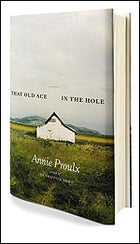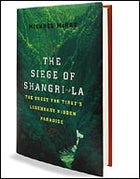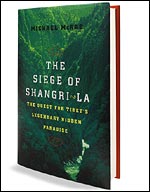THAT OLD ACE IN THE HOLE


By Annie Proulx
(Scribner, $26)
WHEN ANNIE PROULX wrote about Newfoundland in her 1993 Pulitzer Prize-winning novel, The Shipping News, and her adopted home state of Wyoming in the story collection Close Range, she described those places so indelibly that her prose defined them not just to outsiders but to locals as well. In her robust new novel, That Old Ace in the Hole, Proulx takes the panhandle country of north Texas and western Oklahoma and turns it into her own rangeland version of Yoknapatawpha County, full of feuding eccentrics, bankrupt oil barons, and lovelorn cowboys. Bob Dollar, a directionless but eager young orphan, hires on as a location scout for a big corporation called Global Pork Rind. His job: identify sites for the company’s hog farms. On the q.t., of course. Because nothing’s hated in the panhandle quite like industrial hog farms, which pollute water supplies, poison rivers, and smell, Proulx writes, “like ten thousand rotten socks, like decaying flesh, like stale urine and swamp gas, like sour vomit and liquid manure.” Posing as an agent for a housing developer, Dollar gains the locals’ trust by listening to their folksy tales of the by-and-by. And it’s here that Proulx captures the region so compellingly that you may want to hop in the truck and see this heat-blasted, wind-whipped landscape for yourself. “You think it’s just a place,” a rancher tells Bob, explaining why he won’t sell out. “It’s more than that. It’s people’s lives, it’s the history of the country.” And, as told by Annie Proulx, it’s a damned good story.—Bruce Barcott THE SIEGE OF SHANGRI-LA
The Quest for Tibet’s Legendary Hidden Paradise
By Michael McRae
(Broadway Books, $25)
WHEN BRITISH novelist James Hilton coined the term Shangri-La in his 1933 novel Lost Horizon, the idea was not pure fantasy. For centuries Tibetan Buddhists had treasured the legend of Shambhala, a hidden sanctuary holding Buddhism’s most secret teachings. That place, many Tibetans believed, was the Tsangpo Gorge, where the mighty Tsangpo River plunges some 10,000 feet off the Tibetan Plateau, carving a long-unexplored canyon between the storied Himalayan peaks Gyala Pelri and Namcha Barwa. In The Siege of Shangri-La, Michael McRae, an Oregon-based contributor to this and other adventure magazines, explores the historical and modern roots of the Tsangpo legend, from the bold 1924 expeditions of British botanist Frank Kingdon Ward to the 1990s contests among mountaineers and paddlers to survey the gorge and notch the river’s first descent. The latter quest, as McRae notes, claimed the life of kayaker Doug Gordon in 1998, but was largely realized by a group led by kayaker Scott Lindgren last winter, in an ���ϳԹ���-sponsored expedition (“,” July 2002). The author’s own journey to the gorge, in June 2000, was scuttled by a catastrophic flood, and he tells much of the modern story through Tsangpo scholar Ian Baker, an Oxford-educated New Yorker who tossed aside the air-conditioned luxuries of the West for a rugged life studying Buddhism in Nepal. Baker’s style of Zen travel (“You have to suspend your rational mind and allow a more mythic consciousness to guide you,” he tells McRae) turns out to be the perfect match for the Tsangpo, for he discovers that the gorge is no paradise of ease and comfort, but rather the exact opposite.
“It is,” writes McRae, “a Tantric Buddhist paradise in which bad weather, near-vertical slopes, trackless jungles, and lethal white water serve a higher purpose: to increase mindfulness and hasten the passage to self-enlightenment.” McRae’s thoughtful, holistic history similarly enlightens the Western world to the spiritual and physical mysteries that still remain in this last bastion of Shangri-La. —B.B.

